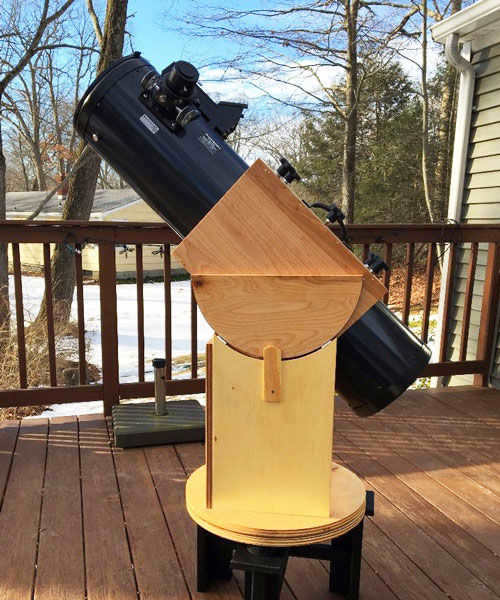During a cloudless evening, when the atmosphere is as black as the feathers of a raven and the celestial bodies appear to radiate with luminosity, many of us have pondered: “I desire to observe them through a telescope!”. Humanity has harbored ambitions of traversing the heavens, yearning to ascertain whether the tapestry formed by countless stars is truly boundless. Centuries of devoted scientific exploration have led to the present state of advancement in the field of astronomical studies.
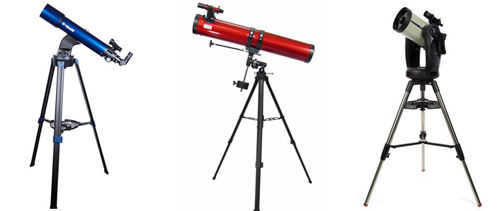
Purchase a telescope Due to advancements in technology, the middle of the 20th century saw the possibility of mass production of high-quality and affordable optics. This resulted in the rise of amateur astronomy and a significant increase in the number of individuals involved. Nowadays, with many telescope brands shifting their production to China, acquiring an inexpensive optical device is no longer an issue.
- Who. (adults only, with children) and where will you observe through the telescope
- Are you willing to travel in search of clear skies, and do you have suitable transportation
- Will you have the time to learn the fundamentals of astronomy
Based on the result, purchase a high-quality telescope that is not overly large to engage in planetary and deep sky observations, examine the Moon’s surface at various magnifications, and capture a few photographs using your smartphone camera. Once you have determined your preferences, you can opt for a more advanced and heavier model, either selling or keeping the previous one as a portable telescope. Don’t worry about the optics losing value, as a used telescope is not significantly cheaper than a new one if you handle it with care and keep the accessories intact. You could even offer a master class on assembly and usage to the future owner!
In the following sections, we will delve into the optical characteristics and types of mounts. After reading this, you will have a good understanding of astronomical jargon and be able to determine whether a fast newtonian telescope can be a dob☺
Is the importance of telescope magnification exaggerated?
While binoculars rely heavily on magnification as a key parameter, telescopes operate differently. Telescopes don’t have a fixed magnification, rather it is determined by the eyepiece used, and is calculated using a specific formula.


So, if you have a refractor with a focal length of 1000 mm and use a 4 mm eyepiece, the magnification will be 250x. The question is, is this magnification too high or too low for a telescope? Well, for an amateur refractor and amateur optics in general, this level of magnification is considered to be too high.
The telescope’s maximum useful magnification is determined by its aperture, which is the diameter of the lens measured in millimeters. The maximum useful magnification is approximately twice the aperture, so for a telescope with a 120 mm aperture, the maximum useful magnification would be 240x. While it may be tempting to choose an eyepiece that achieves such a high magnification, it is only suitable for studying the nearest planets like Mars, Venus, and Jupiter. However, it would not be suitable for survey observations or studying large, faintly glowing objects due to the telescope’s limited field of view and low aperture.
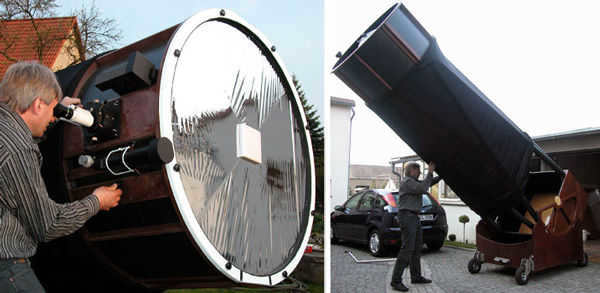
Dr. Erhard Hensgen, a renowned astronomer from Brandenburg, has created an unparalleled telescope with an impressive aperture of over 1 meter. With such advanced optics, the maximum useful magnification can reach an astonishing 2000x! For more captivating photos of this extraordinary telescope, visit cruxis.com/scope/scope1070.htm
The minimum useful magnification for a telescope with an aperture of 120 mm is equal to 20x, which is also known as the equinox magnification. This means that at lower magnifications, the telescope’s exit pupil will be larger than the diameter of the human pupil, resulting in wasted light. It is impractical to use a telescope at sub-equal magnifications, and it is recommended to use astronomical binoculars or a spyglass instead. This parameter is often overlooked when choosing a telescope, as it is intuitively understood without calculations.
Indeed, not just the magnification power and pupil distance, but also numerous other features rely on the eyepiece. The telescope’s field of view, image contrast, and the potential introduction of optical aberrations to the system are all influenced by the optical design of the eyepiece (such as Huygens, Ramsden, Kellner, Plesl, etc.) if it does not align with the instrument’s parameters.

Diagrams sourced from the Wikipedia article
However, it is not obligatory for a novice to delve into this field: any respectable telescope is equipped with 2-3 eyepieces to begin their exploration.
These ideas are closely intertwined, and the corresponding measurements vary only by a multiplier. To simplify, let’s assume they are interchangeable. Therefore, the size of the Relative aperture or Aperture is determined by the ratio of the aperture to the focal length.


For instance, consider the above-mentioned 120 mm/1000 mm refractor with a relative aperture of 1/8.3 units. In general, telescopes are categorized based on the diameter of their relative aperture (RA):
- more than 1/6 – known as “fast” telescopes (ideal for astrophotography);
- 1/6 to 1/8 – high-power, survey telescopes (suitable for observing long objects);
- 1/8 to 1/10 – versatile telescopes (recommended to be paired with a set of multi-focal eyepieces);
- less than 1/10 – long-focus telescopes (designed for studying distant or compact objects).
The term “fast” was introduced in astronomy from astrophotography, where it refers to the ability to capture an optically constructed image quickly using short shutter speeds. Essentially, the faster a lens can collect light, the less time it takes to expose the frame. Consequently, a lightweight telescope will reveal more details compared to a long-focus telescope of the same magnification.
The following pattern applies: the larger the relative aperture of the instrument (the smaller the denominator of 1/**), the better it can detect faint objects against a dark background and magnify them without losing contrast. For instance, a refractor with specifications of 120/1000 mm has a sharper vision than a similar model of 90/900 mm (PO=1/10 < 1/8.3).
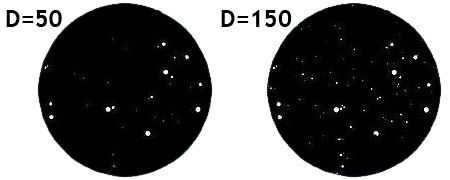
Observing the same constellation through telescopes with 50 mm (left) and 150 mm (right) apertures reveals a noticeable difference:
the larger aperture allows for the visibility of double and faint stars
You might be curious: “How crucial is the quality of the optics?” The answer is that it plays a vital role. The type of optical system, glass quality, and curvature of the optical surfaces determine whether the resulting image will experience aberrations or optical distortion.
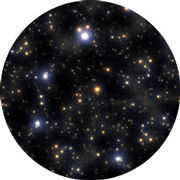
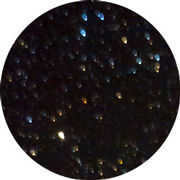
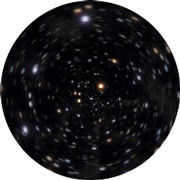
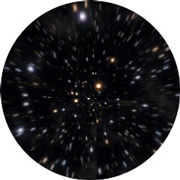
Spherical aberration, coma, and two forms of astigmatism (in that order)
Instances of distortions in astrophotography can be discovered at eckop.com/aberrations
Catadioptric, reflector, or refractor – which option is superior?
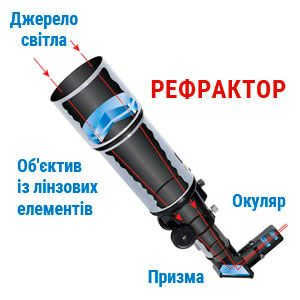
Refractor Telescopes
For beginners, the most recognizable type of telescope is the refractor telescope, which resembles a spyglass. A refractor telescope uses a system of lenses to gather and focus light. These types of telescopes have been in use since the time of Galileo, and over the course of more than four centuries, designers and inventors have worked to improve the optical design and eliminate visible aberrations.
By utilizing bonded 2-5 lens ED-glass, it is possible to correct chromatic and, to some extent, spherical aberrations. Ahromat (two-lens) and Apochromat (improved Ahromat) refractor telescopes are more expensive than standard models, but the improved image quality justifies the investment.
The refractor telescopes have several advantages:
- They have a reliable construction, which makes them easy to maintain and adjust.
- The tightness of the tube reduces the influence of temperature and humidity on the image quality.
- They are suitable for planetary observations.
- They can also be used for ground-based viewing with additional accessories.
Lens telescopes are particularly suitable for studying the surface of the Moon, observing planets, and observing double stars. However, they also have some common disadvantages:
- They have larger dimensions and mass compared to reflectors and catadioptrics.
- The cost per 1 cm2 of aperture is higher, especially for instruments of the Ahromat class and higher.
- The manufacturing of large aperture models can be practically difficult and expensive.
- Not ideal for observing dim galaxies and nebulae.
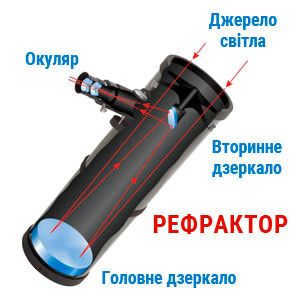
Reflecting Telescope
A reflecting telescope is composed of two mirrors: the primary mirror (which can be spherical, parabolic, or hyperbolic) and the secondary mirror (which can be flat diagonal, elliptical, or hyperbolic). The primary mirror collects starlight and directs it to the secondary mirror, which then reflects the light towards the eyepiece, typically located on the side of the telescope tube. By adjusting the position of the secondary mirror, the focal length of the telescope can be increased beyond that of the primary mirror alone. As a result, even with a relatively short tube length, the reflecting telescope can achieve high magnification.
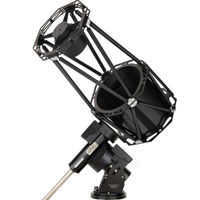
The Newtonian reflector is the first and most popular type of mirror telescope, with the Cassegrain and Ritchie-Cretien systems also being commonly utilized.
When it comes to the design of the optical tube, reflectors can have various configurations, such as a traditional solid tube or a flex-frame system. However, these differences do not impact the optical characteristics.
If you value the following advantages, then a mirror telescope would be the preferred choice:
- Compact size and lightweight construction (thanks to the hollow design)
- No chromatic aberration
- Cost-effective in terms of aperture size
- Possibility to obtain an ultra-large aperture (up to 500 mm in diameter)
- Easy to use for astrophotography
- The reflectors are well-suited for observing scattered star clusters, nebulae, and other faint deep space objects.
However, it is important to consider the drawbacks of reflectors:
- Regular cleaning of the exposed optical surfaces is necessary.
- Thermal stabilization time is relatively long.
- Coma, which is noticeable at the edges of the field, can be corrected by purchasing and installing a coma corrector.
- Reflectors are not suitable for ground-based observations.
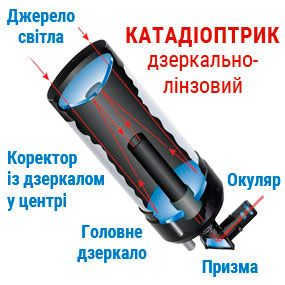
Catadioptric Telescopes
The combination of mirror and lens in the optical system of catadioptric telescopes offers the best of both worlds. The concept of such a device has been pursued since the early 19th century, and it was not until 1930 that the first recognized catadioptric telescope, the Schmidt-Cassegrain system, was created.
Since then, significant advancements have been made to the design, and modern Schmidt-Cassegrain telescopes are now able to eliminate spherical aberration, astigmatism, coma, and field curvature.
When it comes to catadioptrics based on the Cassegren scheme, there are a few key points to consider:
- These telescopes are known for their compact size and portability. In fact, when compared to refractors with the same focal length, catadioptrics can be half as long.
- One notable advantage of these telescopes, especially the Cassegren’s schmidts, is their wide field of view.
- Due to their design, catadioptrics are particularly well-suited for observing deep sky objects and are commonly used for astrophotography.
- Additionally, the closed tube design of these telescopes helps protect the optical surfaces from contamination and minimizes the impact of flowing air on image quality.
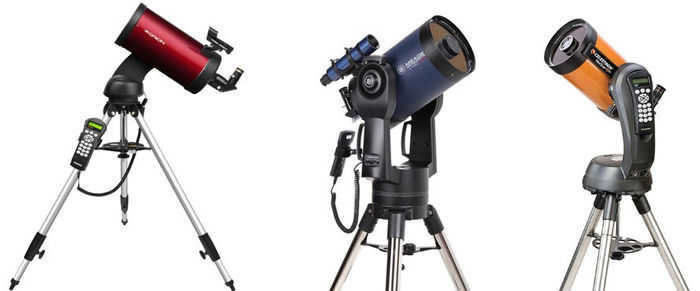

However, despite their advantages, catadioptric telescopes have inherited some drawbacks from their “parents”:
- A relatively long focal length, which is not quite suitable for low magnification survey observations;
- It is almost impossible to obtain a large aperture device, especially at a reasonable price;
- They require a long time for thermal stabilization.
In addition, these telescopes are much more expensive than separate lens and mirror telescopes. While they produce images of excellent quality, chromatic aberration is still possible at the edge of the field of view.
Choosing the Right Mount for Your Telescope
There are two main types of mounts commonly used in amateur astronomy: alt-azimuth (Alt-Az) and equatorial (EQ). Each type has its own variations and applications, and all of them can be enhanced with an automated control system, such as GoTo. Deciding whether to purchase a telescope with auto-guidance is a personal choice. Some people enjoy the challenge of locating objects in the sky using atlases and optical finders. Others prefer the convenience of simply selecting the name of a star, pressing a button on a remote control, and letting the device do the work. A telescope equipped with a GoTo mount not only locks onto an object, but also tracks it for as long as needed during observations.
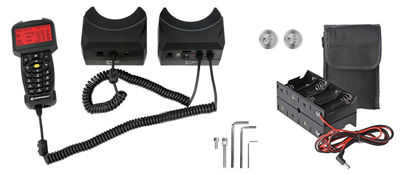
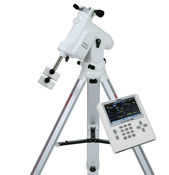
However, the cost of electronics, software, and remote controls with buttons is always a factor to consider, and sometimes it can be quite high: the price of a “smart” mount can go up to $2000 (depending on the brand). It might be more logical to invest these funds into the optics themselves by opting for a higher-quality lens. On the other hand, with the assistance of GoTo technology, even young astronomers can operate the telescope independently, without the need for adult help. In this case, the user’s age is irrelevant: if a child knows how to use a smartphone, they will be able to handle the guiding system.
Azimuthal
The Alt-Az, also known as the azimuthal mount, is a lightweight and affordable type of telescope support. It is attached to a tripod with three legs, or sometimes a single column leg, allowing for control along both the vertical and horizontal axes (elevation and azimuth). To ensure smoother pointing to specific points in the sky, azimuthal mounts are equipped with fine-motion drives.
The simplest azimuth mounts have a forked design and a fine azimuth knob, although they may not include a precision pointing mechanism. On the other hand, more expensive models are outfitted with two fine-tuning knobs or special friction clutches to facilitate rotational motion. These friction clutches cause the telescope to move in small increments, providing precise guidance for the optical tube.
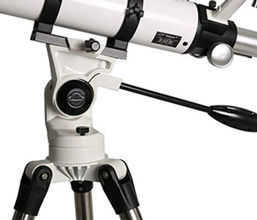
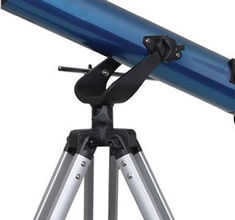
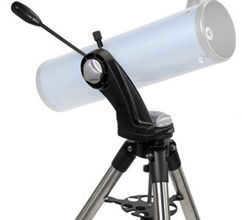
Understanding the relationship between the different types of mounts shown above can be challenging. The support for the tube can be from below, from the side (dovetailed), or wrapped around with rings. However, the classification of mounts is not based on design, but rather on how the pipe is guided.
Azimuthal mounting does not require any preliminary setup and is easy to use: even beginners can learn to use it without assistance. One of the advantages of this type of mounting is its suitability for ground-based observations. Azimuths can accommodate powerful telescopes and telescopes with a rotating system. However, there are also disadvantages:
- Studying objects located close to the zenith is extremely difficult.
- Compensation for the Earth’s rotation is not provided: in order to achieve this, the telescope would need to be rotated around two axes simultaneously, each with different and constantly changing speeds.
- The implication of the second point is that it is not suitable for astrophotography with slow shutter speeds or extended viewing sessions: over time, celestial objects will shift their positions in the sky.
Astronomy enthusiasts consider azimuthal mounts to be the optimal choice for low magnification observations. These mounts are more commonly preferred by owners of universal refractors or medium-focal length catadioptric telescopes. Although standard alt-azimuth mounts have weight restrictions, there are also heavy-duty versions available, such as Dobsonian mounts.
One can convert a high-powered fork mount into an equatorial mount by utilizing an equatorial wedge (as exemplified). This modification enables your telescope, provided it is adequately illuminated, to be suitable for capturing space images and videos. Nevertheless, the price of a commercially-produced EQ wedge amounts to approximately 200 U.S. dollars. A homemade alternative can be considered: numerous do-it-yourself resources are available online.
Setting up the Dobsonian Mount
Essentially, the Dobsonian mount is a modified alt-azimuth mount designed for use with large telescopes. Many individuals choose to construct their own Dobsonian mounts, often installing them in their backyard or at their country house.
Telescopes mounted on a Dobsonian mount, commonly Newtonian reflectors, are often referred to as “light buckets” due to their large apertures. These telescopes feature an eyepiece tube positioned at the top of the telescope, allowing for convenient viewing while standing at a low mount.
On the other hand, refractor and catadioptric telescopes are not suitable for mounting on a plywood base. These telescopes are better suited for a tall tripod with mechanical or automated mounting systems.
The most convenient option, although it requires some preparation and expertise in operating the mount. It can be utilized to manually or with the assistance of a clockwork mechanism to monitor the location of an object in the celestial sphere by rotating the device around a single axis. Owing to the intricacy of the mechanical system, EQ mounts are pricier than the azimuthal mounts in the same category; moreover, they generally have a greater weight.
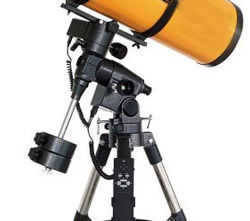
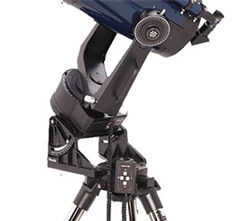 Equatorial mounts possess dual axes of rotation, namely the terrestrial axis and a linear axis lying in the equatorial plane (thus earning its name). The mounting axis that aligns with the Earth’s axis is referred to as the polar axis or axis of direct ascent, while the other axis, perpendicular to it, is known as the declination axis. A series of complex two-part rotations are necessary to initially align the telescope with the desired target.
Equatorial mounts possess dual axes of rotation, namely the terrestrial axis and a linear axis lying in the equatorial plane (thus earning its name). The mounting axis that aligns with the Earth’s axis is referred to as the polar axis or axis of direct ascent, while the other axis, perpendicular to it, is known as the declination axis. A series of complex two-part rotations are necessary to initially align the telescope with the desired target.
Equatorial mounts, similar to azimuthal mounts, come in various types and have distinct appearances. Among amateur astronomers, the German type and equatorial fork mounts are the most preferred, while the English mount is commonly used for large research telescopes. Let’s compare the asymmetrical German mount on the left with the lightweight fork mount on the right:
| EQ mount | German type.often manual or motorized | Forked.almost always computerized |
| Use. | Applicable to all types of telescopes, including refractors with long focal lengths | Only suitable for catadioptric and short-focus reflector telescopes |
| Disadvantages | 1. Requires the use of a heavy counterweight. 2. The issue of meridian passage can be resolved through structural means (bending the mount) or by “translating” the telescope (turning it) | The mount’s teeth that hold the tube cannot be made too high (which results in loss of rigidity). Therefore, telescopes with long tubes cannot point at high positions above the horizon. |
Tips for Choosing a Telescope
This section will be brief. If you’ve already read the previous sections, you should have an idea of what telescope you want. If not, here are some simplified tips to consider.
- Consider transportation to your observing location. If you don’t have a car, you’ll want to prioritize a lightweight setup, including the telescope, mount, tripod, and eyepieces. This means you can choose any azimuthal or equatorial fork mount, and a compact mirror-lens telescope or refractor with a focal length of up to 900mm.
- If you live in a cottage village with a backyard, we recommend a large aperture reflector telescope on a Dobsonian mount. It can be set up in a gazebo or under a canopy during the warm, dry season.
- If you reside on the upper floors of a city skyscraper and wish to observe the surroundings from your balcony, it is advisable to consider using a catadioptric or refractor telescope. Opt for a model that has a relative aperture of no more than 1/10 and can be easily mounted on a low tabletop tripod.
Individuals planning to gaze at the night sky from a high-rise window must be aware that the brightness of city lights can hinder the observation of deep space objects. However, this obstacle can be overcome by selecting an eyepiece with higher magnification (and a smaller focus). This will visually diminish the brightness of the sky and enhance the visibility of faint star clusters. Keep in mind that longer celestial objects may not fit entirely within the telescope’s field of view, requiring you to view them in sections.
- If you have a desire to capture stunning images of galaxies, a light reflector (such as a Newtonian) or a catadioptric (like a Schmidt-Cassegrain) with a medium focal length is essential. It is important to note that these should be mounted in an equatorial fashion.
- Determine whether or not you truly require a homing and tracking system for celestial objects. It is possible that the thrill of exploration may prevent you from utilizing autonavigation. However, if you do choose to utilize it, consider investing in a high fork mount with strong gears.
- When selecting a gift for young astronomers (assuming you won’t be accompanying them on their observations), computerized or motorized telescopes are recommended. On the other hand, manual mounts with precise movement mechanisms are ideal for family viewing.
- Do not heed advice that contradicts your beliefs! Ultimately, a telescope is more than just a set of specifications. Purchasing a telescope is the initial step towards fulfilling a dream, the start of a challenging yet captivating journey through the vastness of the Universe.
Last Modified: 21.12.2018
These are extraordinary instruments designed for observing celestial objects. Recently, high-quality models have become accessible to everyday enthusiasts. Depending on their characteristics and methods of image acquisition, they can be classified as amateur or professional. A professional-grade telescope cannot be found at an ordinary retail store.
It is specifically designed for observing subjects that are located at a significant distance. One of the most well-known examples of this type of device can be found at the Yerkes Observatory, where the lens measures an impressive 112 centimeters in size. Another noteworthy example is the BTA, which is a large azimuthal instrument.
Reflectors
As mentioned previously, a professional telescope differs from a regular one. Depending on the design principles, it can utilize reflection. This type of telescope is known as a reflector, and it is characterized by a lens that takes the form of a spherical mirror.
Aside from using spherical mirrors, other types of mirror surfaces can also be utilized. Reflective telescopes are known for their easy manufacturing process and relatively affordable price. As a result, they are widely produced and constantly upgraded. One of the most renowned models features a lens with a sophisticated design measuring 1 meter in size. The monolithic mirror, on the other hand, boasts a diameter of 8 meters.
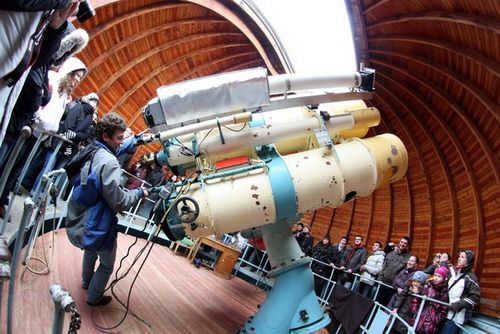
Telescopes with Lenses
The main component of these telescopes is the lens, which plays a crucial role in their functioning. These devices operate based on the principle of light refraction, hence their name – refractor telescopes. The light rays pass through the lens and are refracted, converging at a single focal point on the eyepiece. It is essential for the focal points of the eyepiece and the lens to align perfectly in order to achieve a clear image at the eyepiece.
Observatories worldwide utilize powerful refractor telescopes for professional astronomical observations. These devices have gained popularity despite their notable drawbacks, such as aberrations. Chromatic aberration is a common characteristic of refractor telescopes.
There is a distinct focus for the refraction of red and blue rays. Another issue arises from spherical aberration, which occurs because a lens with a rounded shape functions as an objective.
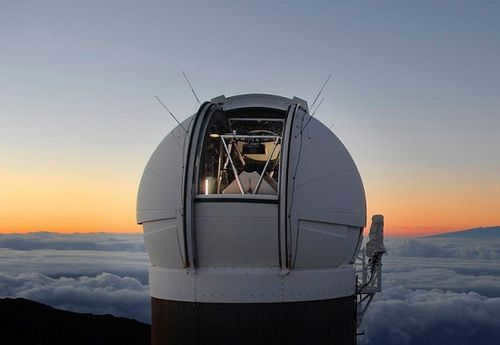
Characteristics
Professional telescopes, whether they are refractors or reflectors, share similar characteristics. Firstly, they are assessed based on their magnification power. With a focal length of 5 centimeters, the magnification can reach up to 40 times. In high-quality models, the eyepiece is usually interchangeable to further increase the magnification.
The second important characteristic is the exit pupil. This refers to the image that is formed for the viewer’s eye when looking through the eyepiece. The resolution and relative aperture are also taken into consideration when choosing a telescope. The latter characteristic represents the ratio of the diameter to the focal length.
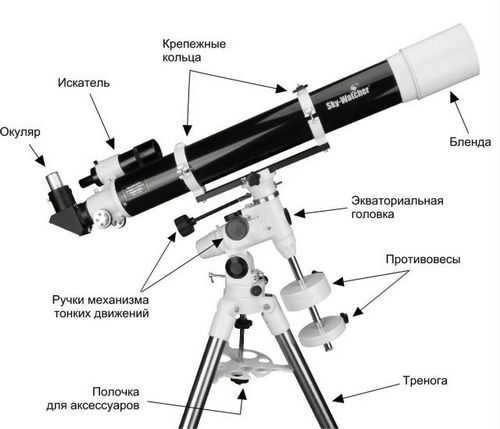
Different Kinds
Traditional telescopes usually have lenses or mirrors. However, not all telescopes are designed in this way. In recent times, manufacturers have been actively introducing devices that don’t require lenses or mirrors. Instead, they use special chips that gather reflected light and send it to computers located in the observatory.
Another category of telescopes is radio telescopes. They are large metal bowls that collect signals using a focused antenna. All the collected data is then transmitted to a computer. One of the main drawbacks of such telescopes is that they only work with waves of a single wavelength.
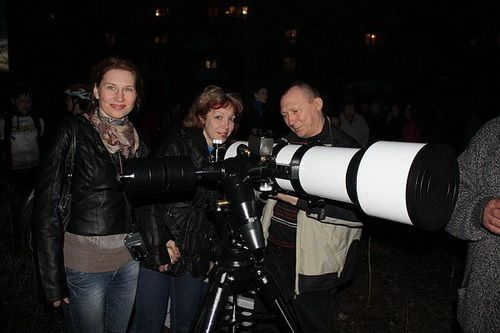
One type of telescope that is used to observe distant objects is the infrared telescope. These telescopes are designed to collect infrared radiation from faraway objects. It is important to note that these devices can only operate within a narrow spectrum. As a result, the images produced by infrared telescopes are displayed in conventional colors. The Hubble telescope is a well-known example of an infrared telescope.
Depending on the distance to the object being observed, different types of telescopes are used for different purposes.
Also, check out the articles on our optical website:
- Creating your own telescope from scratch – diagram and instructionsGone are the days when anyone could make a groundbreaking scientific discovery. Nowadays, everything that an amateur can discover in the fields of chemistry, physics, and biology has already been documented, studied, and analyzed.
- Choosing a telescope for your childThinking back to my childhood fills me with nostalgia, as everything seemed so vast and mysterious, and I yearned to explore and learn. I can still remember my parents telling me about the various constellations and the North Star.
- Discovering the Wonders of the Universe with the Hubble TelescopeExploring the vastness of space is made easier by the Hubble telescope, which takes stunning pictures of galaxies and planets. Unlike observatories on Earth that have to contend with weather conditions and the imperfections of the Earth’s atmosphere, the Hubble telescope operates in the airlessness of space.
- Building Your Own Reflector Telescope: A Fun and Exciting ProjectIf you’re an amateur astronomer who has already dabbled with binoculars and refractor telescopes, and have marveled at the beauty of Venus’ phases, Saturn’s rings, and Jupiter’s satellites, then it’s time to take your stargazing to the next level. Learn how to make your very own homemade reflector telescope for a more thrilling and engaging stargazing experience.
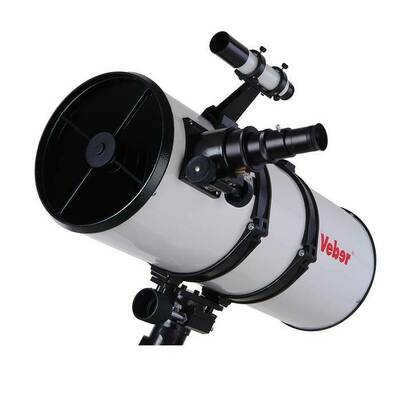
For years, individuals with a passion for telescopes have engaged in discussions about the merits of reflectors versus refractors. However, newcomers to the field often mistakenly believe that these two types of telescopes are identical and remain oblivious to their distinguishing characteristics. Consequently, prior to purchasing a new telescope, it becomes imperative to gain a comprehensive understanding of the discrepancies between reflectors and refractors.
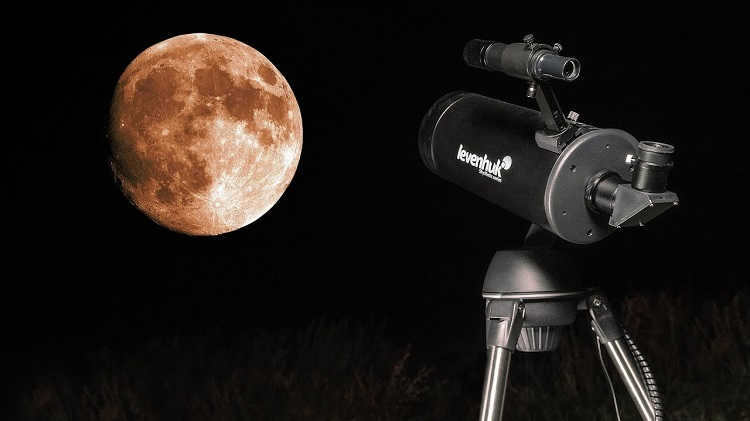
Understanding the Reflector
Reflectors are extremely popular among beginners who are just starting to take an interest in astronomy. These devices utilize mirror lenses, with the mirror serving as the central component of the entire system. It is worth noting that the first assembly of such a telescope occurred in the latter half of the 17th century by Isaac Newton. Prior to this, telescopes were solely constructed using refractor schemes. However, Newton managed to revolutionize astronomy by creating an exceptional and improved telescope, which facilitated numerous discoveries.
Key characteristics
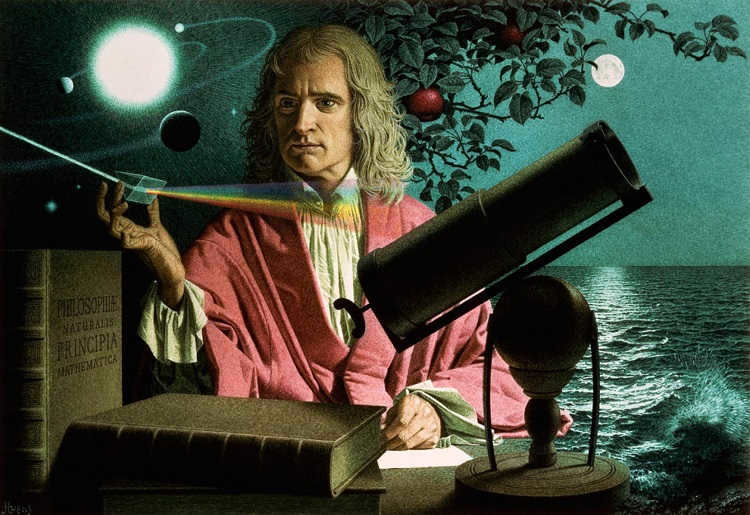
To comprehend the dissimilarity between a refractor telescope and a reflector telescope, one must become acquainted with their primary characteristics. A reflector is a commendable apparatus wherein the light-gathering function is accomplished through a built-in parabolic or spherical mirror. Upon the light’s impact, it is reflected onto a secondary mirror. In turn, the secondary mirror redirects the reflected light further, into a specialized eyepiece assembly. Consequently, when an individual gazes through the telescope, they are able to observe an amplified depiction of the celestial expanse.
This distinctive design of the optical reflector enables a reduction in chromatic aberration and an enhancement in image quality, rendering it crisper and more luminous. As a result, even minuscule entities in the firmament can be discerned with the aid of reflector instruments.
Advantages and disadvantages
In order to comprehend the distinction between refractor and reflex designs, it is advisable to familiarize oneself with their pros and cons beforehand. The main advantages are as follows:
- Complete elimination of chromatic aberration, resulting in improved image quality;
- Capability to manually adjust the mirror’s curvature to fine-tune the optical parameters;
- Enables viewing of even the most distant objects.
Despite the aforementioned advantages, there are drawbacks to such a telescope. The main disadvantages of these devices include:
- Difficult to customize;
- Inadequate protection of the main tube from dust and other forms of contaminants;
- Distortion caused by contamination of the reflective surface may be present.
Furthermore, one of the drawbacks is that reflectors can potentially lose their original properties over time.
What exactly is a refractor?
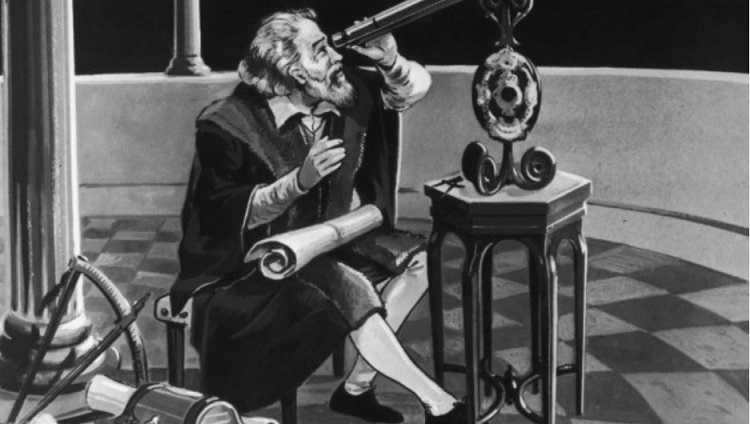
To gain a better understanding of the distinctions between telescopes, it is advisable to acquaint oneself with a concise overview of refractors. Refractors are a rather ancient type of telescopic apparatus that was even developed by Galileo. The initial versions of such devices utilizing lenses emerged in the 18th century. Currently, apochromat refractors enjoy particular popularity among astronomers. These refractors are completely devoid of aberration, which has allowed for the attainment of exceptional image quality.
Distinctive Features
Since their inception, refractor telescopes have undergone continuous improvement. However, despite these advancements, their fundamental design has remained unaltered and has persevered to this day.
Refractor telescopes are well-suited for observing the moon and neighboring planets. They are susceptible to chromatic aberrations, which can manifest as occasional small colored halos when using such a telescope. These halos are most commonly observed near excessively bright objects.
To mitigate the occurrence of chromatic aberration, refractors are equipped with specialized achromatic lenses. These lenses enhance image clarity.
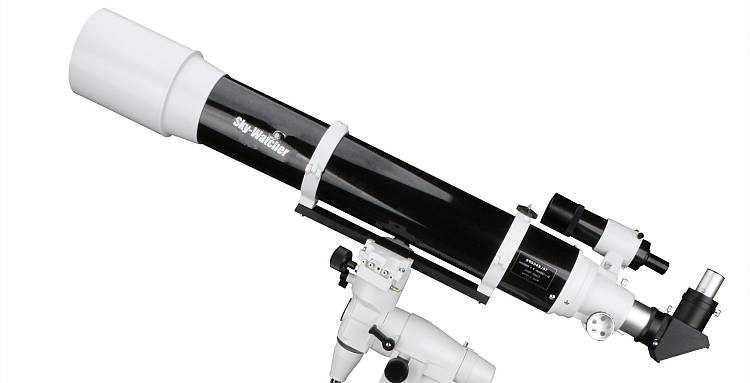
Just like any other type of telescopes, refractors have their own set of advantages and disadvantages. So, before purchasing one, it is advisable to become familiar with its pros and cons. The main advantages of refractors include:
- Simple yet reliable design;
- Produces a fairly clear image, despite the presence of aberrations;
- Does not require professional maintenance;
- High-quality lens system, securely protected from moisture and dust.
However, there are also some drawbacks to consider. The main disadvantages include:
- Rather large dimensions and weight;
- Higher cost compared to other models;
- Poor visibility of objects located at a distance.
Another drawback of the refractor is that it may not be suitable for beginners. It is better suited for individuals with some prior knowledge of astronomy.
What are the distinctions?
Many aspiring astronomers often wonder about the differences between a refractor and a refractor. Some individuals mistakenly believe that they are the same, but this is far from accurate. These telescopes possess various dissimilarities. The primary distinction lies in their optical systems. Refractors employ two lenses, which function as reflectors and refract light. The main distinguishing characteristics of a refractor include:
- excellent dependability and extended lifespan;
- the quality of the image remains unaffected by environmental factors;
- ideal for observing objects on land;
- impressive dimensions;
- not ideal for researching nebulae or less luminous celestial bodies.
Reflector radio telescopes are better suited for studying remote celestial objects that are challenging to observe with refractors.
Criteria for selection
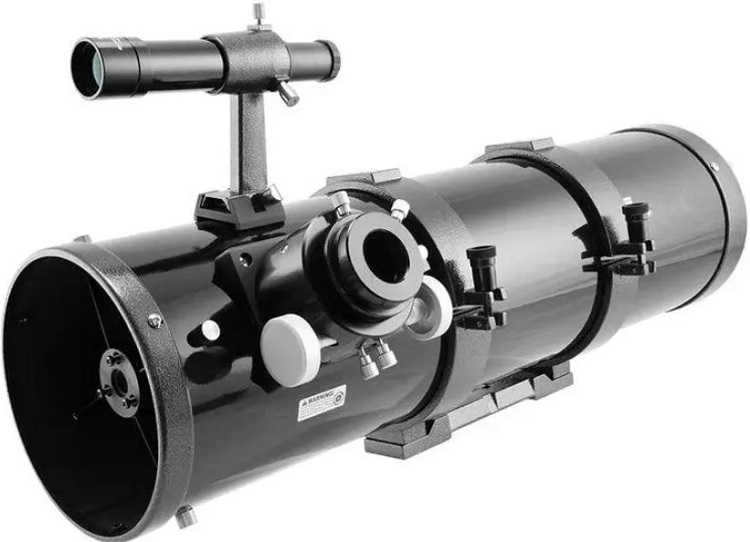
When it comes to choosing a new telescope, it’s important to approach the task responsibly and prepare in advance. There are several key factors to consider when making your selection:
- Optical design is the first aspect to consider. Telescopes can vary in their optical schemes, with reflectors using mirrors and refractors utilizing lenses.
- Size of the lens is another important consideration. It’s generally recommended to opt for models with larger lenses, as they provide a larger aperture and better image quality. However, excessively large telescopes may be cumbersome and heavy.
- Focal length is a crucial parameter that determines the telescope’s ability to focus. Longer focal lengths generally result in better focusing capabilities.
One more factor that you should certainly take into account is the price of the device. There is no necessity to purchase excessively pricy models, especially when the telescope is intended for a novice.
The top telescope for a novice
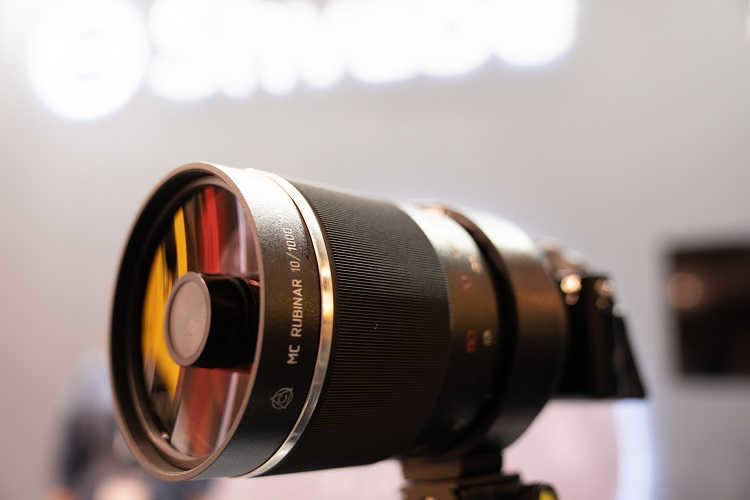
Beginners who have little knowledge about astronomy often face difficulties when choosing a new telescope. For such individuals, it is advisable to focus on compact models that are perfect for home use. It is not recommended to purchase professional-grade telescopes, as they can be challenging to set up without prior experience. Instead, it is better to opt for simpler mirror-lens models, which are considered an excellent choice. As one’s interest in astronomy grows, they can always upgrade to a more advanced telescope in the future.
The price range for basic telescope models usually falls within 20,000 rubles. More expensive telescopes are typically designed for professionals and enthusiasts with a higher level of expertise.
When purchasing a telescope, many individuals tend to make mistakes. One of the most frequent mistakes is the immediate inclination to buy a larger model. However, the device’s power is not contingent on its size. Thus, it is advisable to refrain from hastily purchasing an excessively bulky apparatus.
Another common error is the disregard for the device’s specifications. It is advisable to acquire a telescope that can fulfill all requirements for a minimum of 2-3 years.
Prior to selecting a new telescope, it is advisable to consult with an expert. They will assist in selecting the most suitable model.
Video about the subject
Take a look at the video below to witness the origins of the very first telescope.
Summary
At present, there is a wide range of telescopes available, including popular options like reflectors and refractors. It is recommended to familiarize yourself with the key differences between these two types before making a telescope purchase.
The Sun and stars are massive spherical objects made of hot matter, which leads to the emission of electromagnetic waves across a range of frequencies, from gamma rays to long radio waves.
Planets and their moons reflect sunlight, resulting in the emission of infrared rays and radio waves.
Thin gas nebulae emit electromagnetic waves with specific frequencies.
Astronomical instruments have been developed to study celestial bodies, including optical telescopes for observing light rays and radio telescopes for receiving radio waves.
The primary objective of telescopes is to gather as much light energy as possible from a celestial body and to minimize the amount of detail discernible.
Telescope lenses are of significant size and capture the light flux, focusing it to enable the observation of faint celestial objects that are not visible to the naked eye.
There are currently two types of telescopes: ground-based and orbital.
Optical telescopes are divided into two main categories: lens telescopes, also known as refractors, and mirror telescopes, also known as reflectors.
Mirror-lens optical systems, or catadioptric systems, are a type of optical system that includes both spherical mirrors and lenses as optical elements. Mirror-lens systems are used in searchlights, headlamps, early lighthouses, microscopes, and telescopes, as well as in telephoto lenses and ultra-luminous lenses.
It is preferable for radio telescopes to be situated in remote areas away from major population centers in order to minimize the interference caused by radio stations, television, radar, and other devices that emit electromagnetic radiation. Placing the radio observatory in a valley or lowland provides even greater protection against the influence of artificial electromagnetic noise.
The primary tool utilized in astronomy to observe celestial objects, receive their radiation, and analyze it is a telescope. The term originates from the combination of two Greek words: tele, meaning “far away,” and skopéo, meaning “looking.”
The primary purpose of a telescope is twofold: first, to gather as much light as possible from the object being observed, and second, to allow for the examination of fine details that are not visible to the naked eye. The greater the telescope’s ability to detect faint objects, the stronger its ability to penetrate . The capacity to distinguish intricate details is known as the resolving power of the telescope . These two qualities of a telescope rely on the size of its objective lens.
The lens’s ability to capture light increases in proportion to its size (squared diameter) (Fig. 1.4). Even in complete darkness, the pupil of the human eye does not exceed 8 mm in diameter. However, the lens of a telescope can be tens or hundreds of times larger than the eye’s pupil. Thanks to telescopes and advanced radiation detectors, it is now possible to detect stars and other objects that are 100 million times fainter than what can be seen with the naked eye.
The resolving power of a telescope improves as the size of the image of a bright point (such as a star) decreases. If the distance between the images of two stars is smaller than the size of the image itself, they merge into one. Due to diffraction, the image of a star will not be a perfect point, but rather a bright spot known as a diffraction disk. The angular diameter of this disk is equal to

The formula for calculating the theoretical resolving power of a telescope is given by λ / D * 206,265, where λ represents the wavelength of light and D represents the diameter of the telescope lens. For example, a school telescope with an objective lens diameter of 60 mm would have a theoretical resolving power of approximately 2″. It is important to note that this exceeds the resolving power of the naked eye (on average) by a factor of 60. However, the actual resolving power of the telescope will be lower due to the impact of atmospheric conditions and air movement on image quality.
If a telescope uses a lens as its objective, it is referred to as a refractor (derived from the Latin word “refracto” meaning “to refract”). On the other hand, if a concave mirror is used, it is called a reflector (derived from the Latin word “reflecto” meaning “to reflect”).
Aside from refractors and reflectors, there are currently various types of mirror-lens telescopes being utilized.
In smaller telescopes, the collecting lens typically used as the objective lens is a double-convex lens. As you may know, when the object is situated beyond the double focal length, it produces a reduced, inverted, and real image. This image is positioned between the focal point and the double focal point of the lens. The distances to the moon, planets, and especially the stars are so immense that the rays emanating from them can be considered parallel. Consequently, the object’s image will be situated in the focal plane.
If the image produced by the lens is close to the eyepiece’s focal plane, the magnification provided by the telescope is equal to the ratio of the lens’s focal length to the eyepiece’s focal length:
The use of interchangeable eyepieces allows for obtaining various magnifications using the same lens. Hence, the capabilities of a telescope in astronomy are determined not by its magnification, but by the diameter of its lens. When it comes to visual astronomical observations, magnifications of up to 100 times are typically employed. The application of higher magnifications is impeded by the Earth’s atmosphere. The movement of air, which is usually imperceptible to the naked eye (or at lower magnifications), causes fine details of the image to become blurred and distorted. This poses challenges for modern observations with photoelectron light receivers. Consequently, astronomical observatories that utilize large telescopes are situated in areas with favorable astroclimatic conditions: plenty of clear days and nights, high atmospheric transparency, and stability, often at elevations several kilometers above sea level.
A contemporary telescope is a sophisticated piece of machinery comprising highly accurate optics of varying sizes, state-of-the-art radiation detectors, and a comprehensive array of scientific and operational instruments. Reflecting telescopes are the predominant type among the largest telescopes in use today.
The telescope-reflector in Russia is the largest of its kind, boasting a mirror with an impressive diameter of 6 meters that has been meticulously polished to within a fraction of a micrometer. With a focal length of 24 meters, this telescope’s mirror is truly a marvel. Weighing in at about 40 tons, it is a true heavyweight in the world of telescopes. However, the mirror is just a small part of the equation when it comes to the overall mass of the installation. The entire telescope setup weighs over 850 tons and stands at a height of 42 meters.
One of the most remarkable features of this telescope is its computer-controlled system. This advanced technology allows for precise pointing at any celestial object of interest and ensures that it remains in the telescope’s field of view for extended periods. By smoothly rotating the telescope in sync with the Earth’s rotation, this system enables astronomers to observe objects for extended periods without losing sight of them.
The telescope is an integral part of the Special Astrophysical Observatory of the Russian Academy of Sciences. It is situated in the North Caucasus, near the village of Zelenchuke Kaya in Kabardino-Balkaria. Perched at an altitude of 2100 meters above sea level, this location provides optimal conditions for astronomical observations.
Prehistory
The exact origins of the telescope and its inventor remain unclear, but it is widely believed to have been created by a Dutch eyeglass maker named John Lippersgei. John Lippersguy.
In 1607, Lippersgei showcased an instrument in The Hague that closely resembled a modern telescope, a groundbreaking invention eagerly anticipated by sailors. However, Lippersgei was unable to secure a patent as similar devices were already in the possession of Zacharias Jansen from Middelburg and Jacob Metius from Alkmaar.
Even before this significant development, Leonardo da Vinci had made preliminary sketches as early as 1509. These sketches depicted rudimentary telescope-like devices consisting of one or two lenses.
Galileo Galilei, the renowned scientist, invented a fully functional apparatus in 1609 to observe celestial bodies. His initial instrument had a 3x magnification, followed by an 8x magnification model, and finally a 32x magnification version. Despite the limitations of these early telescopes, Galileo Galilei made groundbreaking discoveries in the field of astronomy. Among his notable achievements was the first-ever examination of:
However, it wasn’t until 1611 that this remarkable device received its official name. Ioannis Dimisianos, a prominent mathematician from Greece, proposed calling it a telescope. Thus began the era of refractor telescopes in the realm of astronomy, all thanks to Galileo Galilei’s pioneering work.
The telescope constantly sought improvement, but it proved impossible to manufacture large-sized lenses. As a result, the instruments were long, unwieldy, and had a limited field of view. During that time, the only solution was to invent tripods.
In the latter half of the 17th century, Christian Huygens constructed a 7-meter-long telescope that provided 100x magnification, with an aperture of approximately 15 cm. Today, a similar device is considered amateur-grade and recommended for beginner astronomers. The telescope underwent numerous attempts at improvement. By the late 17th century, a telescope measuring 70 meters in length had been assembled! However, operating and adjusting it proved to be a challenge. Even the slightest breeze posed a hindrance to observations. Brilliant minds dedicated their efforts to enhancing its capabilities.
Isaac Newton came up with a revolutionary invention. He created a device that could collect and focus rays using a concave mirror. This transformed Galileo’s refractor into Newton’s reflector. The key challenge was to produce a high-quality mirror for the device. Newton used a special alloy of copper, tin, and arsenic, which significantly improved the image quality and achieved a 40-fold magnification. The king was so impressed with the telescope that Newton was immediately recognized as a member of the Royal Society. This happened in 1704, marking the beginning of a new era for Newton’s reflector in the 18th century. His homemade telescope can still be seen at the Museum of Astronomy in London.
Over time, telescopes became more convenient and compact, often no longer than 2 meters in length. Although they were still bulky, they could be easily transported and taken anywhere.
History of the development of refractors and reflectors
In the late 18th century, a new type of telescope was introduced by a French innovator named Cassegrain. He suggested the use of two mirrors instead of just one, but unfortunately, the technology of his time did not allow for the creation of the required mirrors. However, his groundbreaking invention was eventually brought to life in the modern era with the development of the powerful Hubble telescope. This extraordinary device utilizes mirrors that operate based on the principles initially described by Cassegrain.
Regrettably, the reflectors turned out to be costly, and furthermore, the primary components – metal mirrors – gradually lost their shine and became lackluster. As a result, efforts continued to enhance the refractor telescope. By 1758, two entirely novel mirror types – crown and flint – were invented. They were effectively utilized by J. Dollond in his double-lens telescope. Subsequently, this instrument came to be known as the Dollond instrument. The triumph of the refractor was indisputable!
Herschel was followed by Lord Ross, an English astronomer who constructed a reflector telescope with a mirror diameter of 182 centimeters. He promptly made the groundbreaking discovery of spiral nebulae that were previously unknown. However, these telescopes had their flaws: they were bulky, had limited light reflection, and their mirrors deteriorated quickly.
It wasn’t until 1856 that physicist Leon Foucault utilized a mirror made of silvered glass. This groundbreaking experiment proved to be successful.
Russian scientists also played a role in these new advancements: J.V. Bruce developed metal mirrors, and M.V. Lomonosov (alongside Herschel) worked on a new design that aimed to minimize light loss.
It wasn’t until the late 19th century that lenses treated with silver on their glass surfaces started being manufactured, marking a significant breakthrough in telescope construction. These lenses were capable of reflecting up to 95% of the incoming light flux.
L. Foucault revolutionized the field by creating a reflector telescope using a parabolic mirror, which at the time was an enormous 91 cm in diameter.
As the 20th century progressed, telescopes with even larger mirrors became more common. For instance, the Mound Wilson Observatory houses a telescope with a diameter of 256 cm, while in California, there is a colossal reflector with a diameter twice as big.
Telescopes in the 20th Century
Thanks to the advancements of the 20th century, telescopes have made significant progress in providing high-quality images and accurate information about celestial objects. These developments have been accompanied by computerized guidance systems. Here are a few notable telescopes from this era:
– In 1976, Soviet scientists successfully installed the Bolshoi Telescope Azimutal (BTA) in the North Caucasus. This impressive telescope featured a massive six-meter, 42-ton mirror. The BTA played a crucial role in numerous important discoveries related to the interaction and evolution of galaxies. During its time, it stood as the sole giant telescope in operation.
– The Hubble Space Telescope is a space-based observatory equipped with all the necessary instruments for conducting astronomical observations and research. Because it operates outside of Earth’s atmosphere, it is able to capture incredibly high-quality images of objects in space. Launched in 1990, the Hubble is set to be replaced after 2020.
– Two highly efficient twin telescopes, KECK 1 and KECK 2, were installed between 1993 and 1996 on the summit of Mauna Kea, an extinct volcano. These telescopes, each the size of an 8-story building, have exceptional angular resolution, which has allowed for the discovery and exploration of exoplanets.
Modern telescopes have made significant advancements in terms of mirror size, precision manufacturing, and the range of wavelengths they can observe. Observatories now operate across various bands, including infrared, ultraviolet, X-rays, terahertz, and more. These telescopes are equipped with advanced computer programs that allow for the collection and analysis of data.
The Large Canary Reflector Telescope, which was installed in 2007 on the Muchachos volcano at an altitude of 2,400 meters, enables the study of the most distant objects in outer space.
Since 2005, the CONDOR detector has been operating in the Chilean Atacama Desert at an altitude of 5,100 meters above sea level. This location, known for its extremely dry air, allows for the study of the Universe in the terahertz range.


